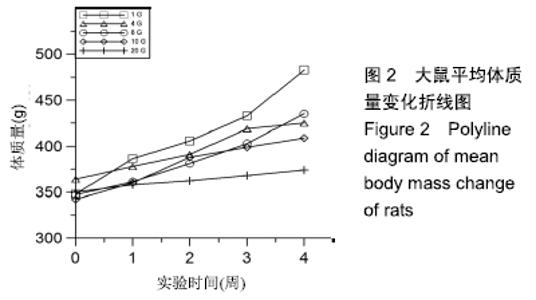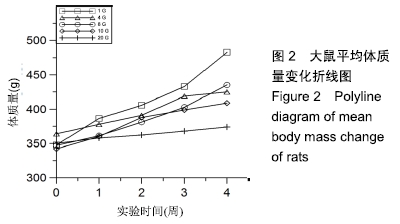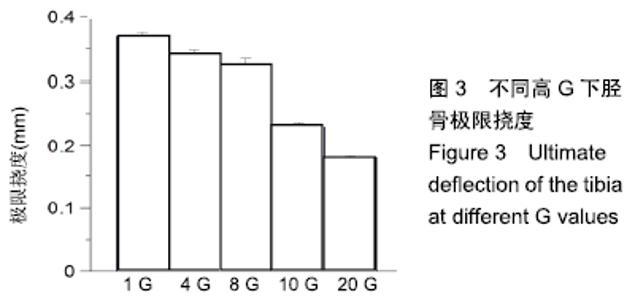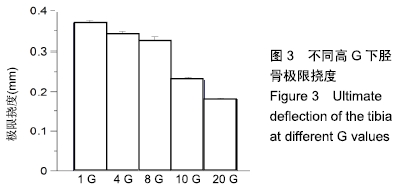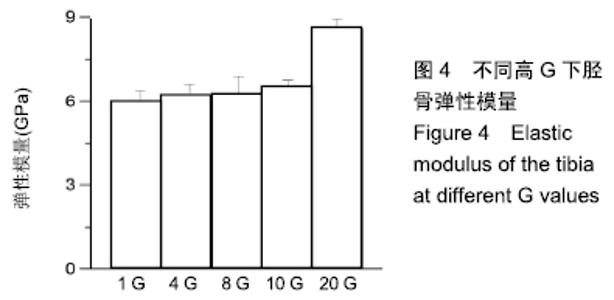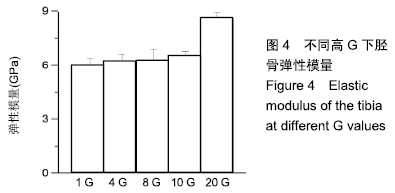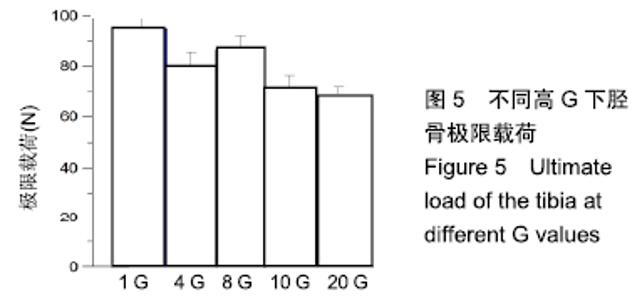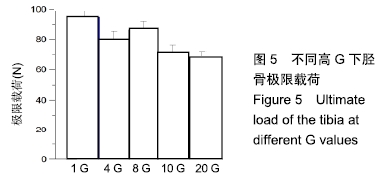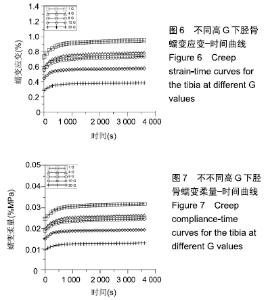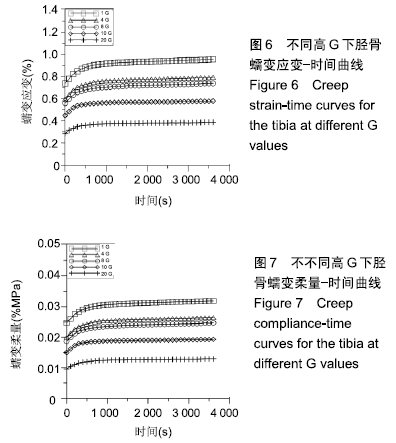[1] 钟国徽,李玉恒,凌树宽,等.太空微重力环境对人体的影响及防护措施[J].生物学通报,2016,51(10):1-4.
[2] SPECTOR ER, SMITH SM, SIBONGA JD. Skeletal effects of long-duration head-down bed rest. Aviat Space Environ Med. 2009;80(5 Suppl):A23-28.
[3] VICO L, BAROU O, LAROCHE N, et al. Effects of centrifuging at 2 g on rat long bone metaphyses. Eur J Appl Physiol Occup Physiol. 1999;80(4):360-366.
[4] IKAWA T, KAWAGUCHI A, OKABE T, et al. Hypergravity suppresses bone resorption in ovariectomized rats. Advances in Space Research.2011;47(7):1214-1224.
[5] AMTMANN E, OYAMA J. Effect of chronic centrifugation on the structural development of the musculoskeletal system of the rat. Anat Embryol (Berl). 1976;149(1):47.
[6] 林俊豪.不同加速度的高G极端环境对骨组织影响的生物力学实验研究[D].长春:吉林大学,2018.
[7] 陈孟诗,赖胜祥,李良,等.大鼠的骨生物力学指标选取及测试[J].生物医学工程学杂志,2001,18(4):547.
[8] 陈天华,陈孟诗,姚晓琳,等.一种新的测试胫骨骨生物力学特性的三点弯曲方法[J].生物医学工程学杂志, 2008,25(2):341-343.
[9] 蒋超,王以朋,邱贵兴,等. 晚期骨关节炎患者膝关节软骨下松质骨祖细胞的特性研究[J].中国骨与关节外科,2016,9(1):69-74.
[10] SASAKI N, NAKAYAMA Y, YOSHIMAWA M, et al. Stress relaxation function of bone and bone Collagen. Biomech.1993;26: 1369-1376.
[11] 张伊卓,宋雅伟,卞雯文.股骨颈的实验力学研究[J].中国骨质疏松杂志,2015,21(9):1065-1068.
[12] IYO T, MAKI Y, SASAKI N, et al. Anisotropic viscoelastic properties of cortical bone. Biomech.2004; 37:1433-1437.
[13] 吴丹凯,李新颖,李鹏.老年胸腰椎松质骨的扭转力学特性[J].中国老年学,2015,35(1):180-181.
[14] JI B, GAO H. Mechanical properties of nanostructure of biological materials. Mech Phys Solids.2004;52:1963-1990.
[15] 张翘,张淑娟,李新颖.青年与老年胸椎松质骨应力松弛特性对比分析[J].中国老年学,2015,35(2): 395-396.
[16] 魏朝磊,高丽兰,张春秋,等.单轴压缩下松质骨的应力率和蠕变性能[J].中国组织工程研究,2017,21(31): 5014-5018.
[17] 郭长青,张丽萍.针刀干预对膝骨关节炎兔髌韧带拉伸、蠕变及应力松弛等生物力学特性的影响[J].中国科学:生命科学, 2016,46(8): 976-982.
[18] 魏朝磊.过载条件下松质骨力学性能的研究[D].天津:天津理工大学, 2018.
[19] 杨洁.福尔马林防腐对牛股骨皮质骨生物力学性能的影响研究[D].长沙:湖南大学,2016.
[20] ALBERT CI, JAMESON J, HARRIS G. Design and validation of bending test method for characterization of miniature pediatric cortical bone specimens. Proc Inst Mech Eng H. 2013;227(2): 105-113.
[21] 高子剑,于露,高丽兰,等.大鼠高加速度离心加载装置:高加速度环境下动物的力学生物学响应[J].中国组织工程究, 2019,23(3):372-377.
[22] 曹新生,吴兴裕,孙喜庆,等.低G预适应对高G暴露致大鼠学习记忆功能受损的影响[J].南方医科大学学报,2005,25(2):212-215.
[23] 赵波,吕云利,孙喜庆.高性能战机加速度致脑缺血预警与防护研究进展[J].西北国防医学杂志,2017,39(6): 415-417.
[24] 陈铭,关键,段峰,等.机械离心力对成骨细胞骨形态发生蛋白信号通路的影响[J].中国组织工程研究, 2012,16(20):362-3628.
[25] 张舒.不同重力环境对大鼠成骨细胞力学信号转导功能的影响[D].西安:第四军医大学,2000.
[26] 丁柏,汪恭质,张晓铀,等.模拟失重和超重刺激对体外培养成骨瘤细胞分裂,增殖影响的研究[J].航天医学与医学工程, 1997,10(2): 104-107.
[27] MiWA M, KOZAWA O, TOKUDA H, et al. 超重力对成骨细胞样细胞增殖和分化的影响[J].骨性矿工, 1991,14(1):15-25.
|
